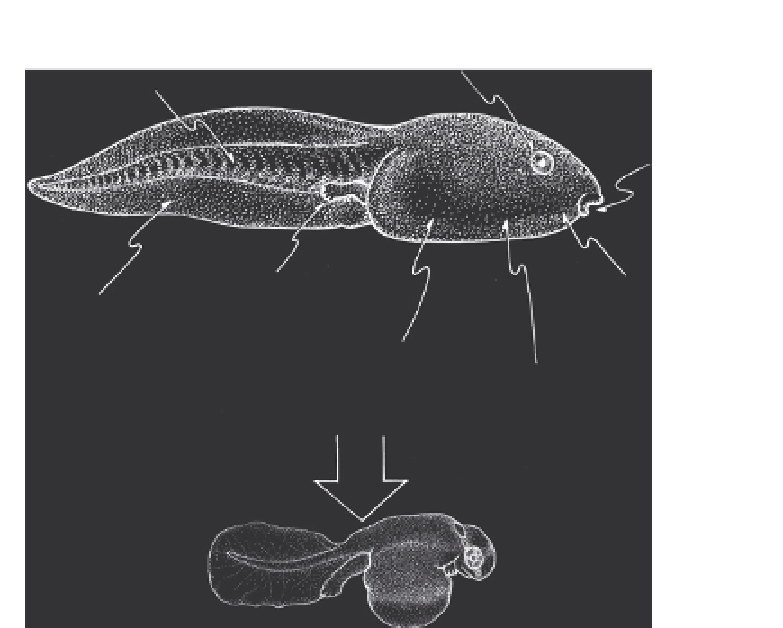Biology Reference
In-Depth Information
Reduce muscle
(no longer used
for swimming)
Enlarge
Remove
tadpole jaws
(beak, teeth, cartilage)
Remove constraint
(let grow)
Elongate Meckel's
cartilage + modify
jaw cartilages
Expand + vascularize
(for respiration)
Shrink long coiled gut
(no longer needed
for herbivory)
Remove operculum
+
expose fore limb
Increase yolk mass
Figure 9.2 Comparison between a typical tadpole and an E. coqui TS10 embryo. A num-
ber of changes occurred as direct development was derived from the ancestral biphasic
life history. From
Elinson (2001)
.
formation of large limb buds in contrast to the delayed origin and slow
development of limbs in tadpoles. They also have a frog-like head with large
eyes and a gaping jaw in contrast to small eyes and a tadpole jaw designed for
rasping or filter feeding (
Figs. 9.1 and 9.2
).
Many structures, characteristic of aquatic embryos and of tadpoles, are
rudimentary or do not form in direct developers (
Elinson, 2001
). Using
E. coqui
as the exemplar, their embryos lack cement glands (
Fang &
Elinson, 1996, 1999
), used by aquatic embryos to attach themselves to plants
or other substrates while they develop swimming capability. Gills are greatly
reduced in
E. coqui
, and absent in many direct developers. Development of
the operculum is incomplete (
Callery & Elinson, 2000b
).
E. coqui
embryos
lack a hatching gland, as they use an egg tooth for hatching from the jelly
capsule (
Fig. 9.3
). Their egg tooth is modified from the keratinous teeth
and beak, characteristic of tadpole jaws. They do not develop lateral line or-
gans (
Schlosser, Kintner, & Northcutt, 1999
), used by aquatic organisms to
sense water currents, and their tail musculature is greatly reduced, since the
tail is no longer used for swimming (
Fig. 9.2
).

